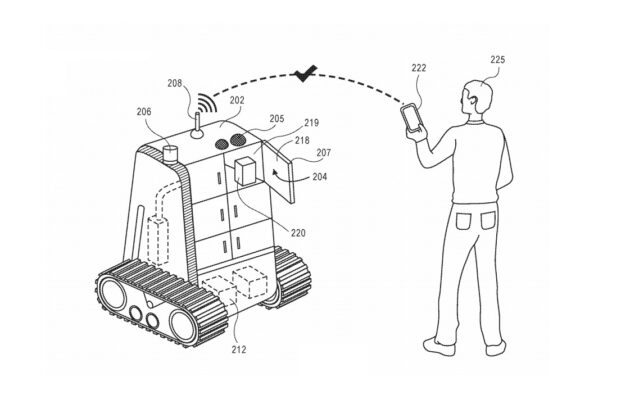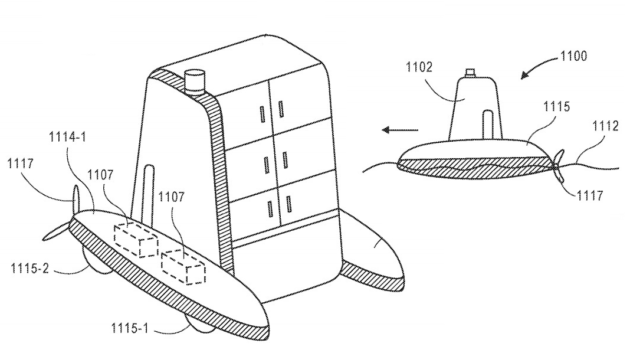
Amazon is already testing robots that deliver packages, but a newly issued patent covers a far more ambitious scheme, involving storage compartment vehicles that can roam the sidewalks to make multiple deliveries along their routes.
As described in the patent application published today, Amazon’s proposed SCVs could pick up items for return as well.
If the plan is fully implemented, it could address the “last mile” or “final 50 feet” challenge for delivery systems by having customers come out to the sidewalk, tap the required security code on their smartphones, and open up the right doors to grab the items they’ve ordered.
There’s no guarantee that we’ll see treaded SCVs roaming the street anytime soon. Amazon says its patent applications explore the full possibilities of new technologies — but those inventions don’t always get turned into new products and services as described in the applications. Sometimes the inventions never see the light of day. (Just ask Jeff Bezos about the airbag-cushioned smartphone he invented.)
That being said, the storage compartment vehicle isn’t all that much of a stretch beyond the Amazon Scout delivery robots — which are being tested north of Seattle in Snohomish County, and in other climes as well.
The device itself, as shown in the patent application’s drawings, is reminiscent of the Dalek cyborgs from the “Doctor Who” TV series. But instead of bristling with weapons, these robots bristle with boxes.

Delivery agents could fill up the SCVs with items and set them loose from a loading area to make their dropoffs. The robots could position themselves at predetermined locations for pickups, or head out to the neighborhoods where the customers live. Whether the customers go to the robot, or the robot goes to the customer, doors would be opened and closed using a security code that registers with the SCV’s cloud-based control system.
Much is made in the patent application — which was filed two and a half years ago by Seattle-area inventors Wicksell Metellus, Kristopher William Bell, Julius Chen, Wesley Scott Lauka and Ryan Scott Russell — about the tanklike tracks that enable the SCV to move along a wide range of slopes and rough terrain.
Each compartment could contain a protective air bladder that can be inflated to cushion the package within. Cameras, microphones, GPS devices, biometric scanners and other gizmos could be installed onto the robots to monitor their surroundings, provide navigational data, make sure the deliveries get to the right customers — and make sure the robots don’t get messed with.
There’s even a model that’s outfitted with floats for marine delivery applications, or with propellers for aerial deliveries.
Amazon Robotics is growing by leaps and strides — but filling the sidewalks, waterways and flight paths with robots on regular routes would represent a whole new level of automation. Let’s just hope there’s an off switch to flip in case those delivery Daleks start shouting “Exterminate! Exterminate!”